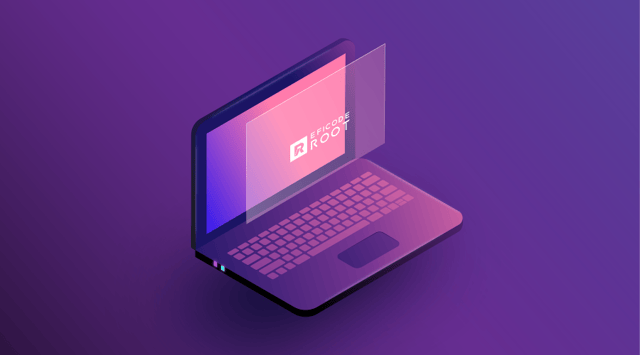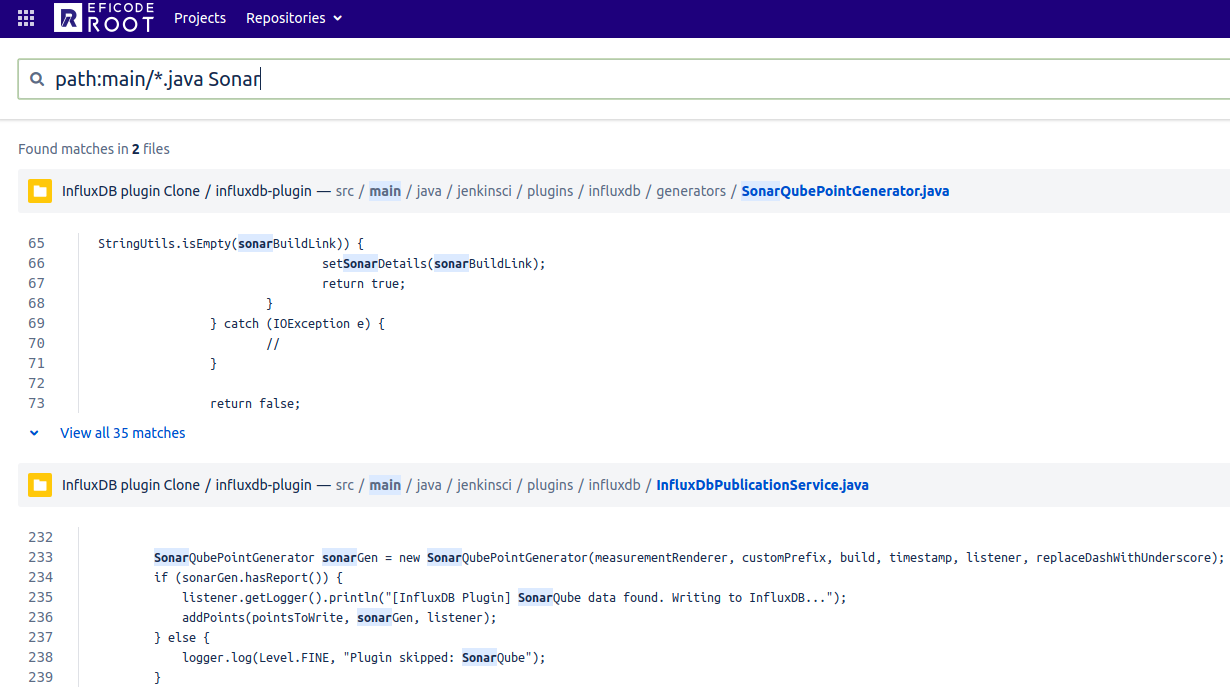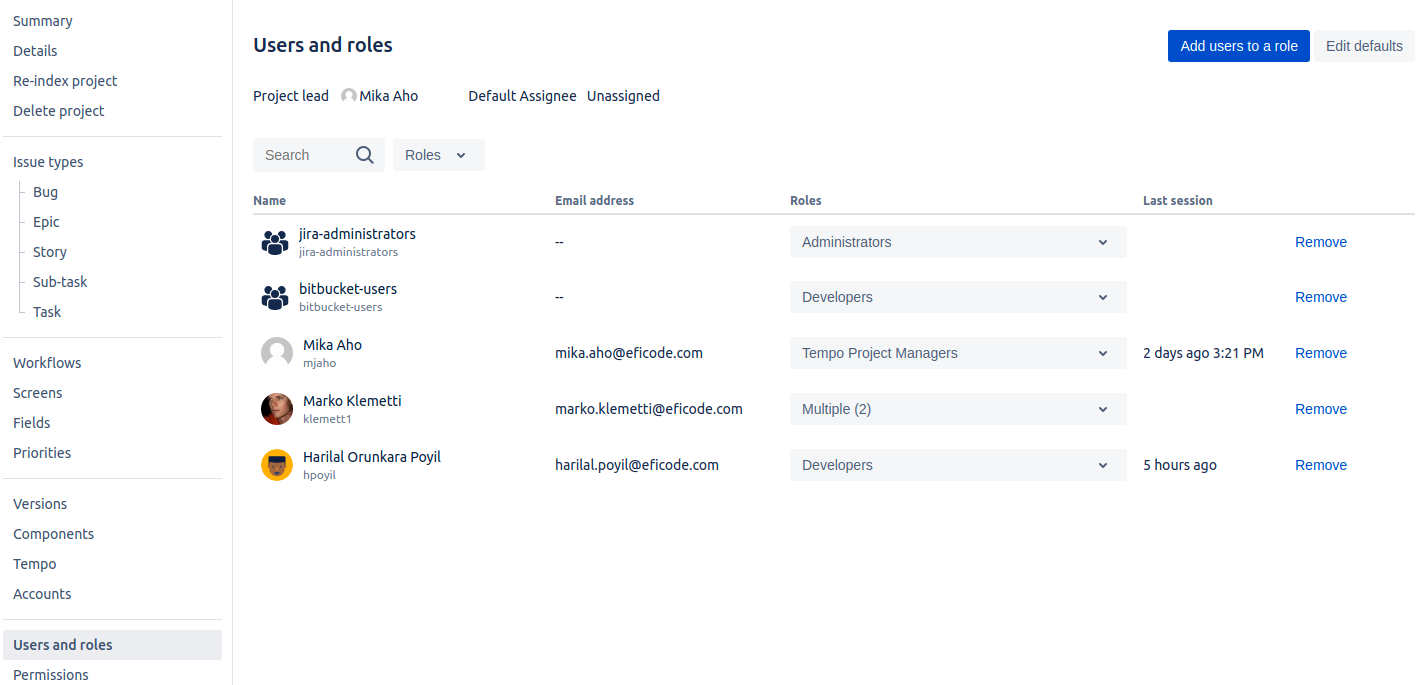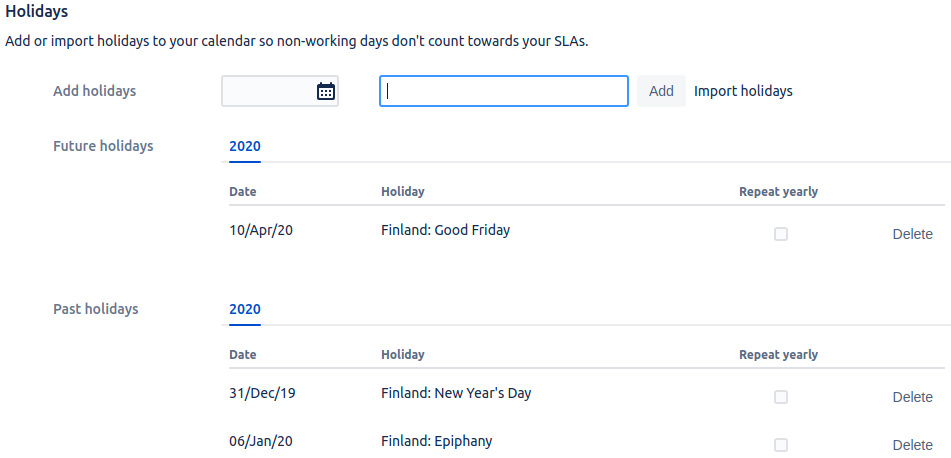What’s new this February?

In this blog, we’ll walk you through the latest improvements to Eficode ROOT as of February 2020
The first month of 2020 is nearing its end, and a holiday season and new year’s festivities are a thing of the past (or rather a thing of the future!). By this time, we all probably have reaccustomed to our daily duties and responsibilities.
Here at Eficode we’re kicking off the new decade with a proper bang. There’s a host of exciting new things in store for this February, and a whole lot more later this year. Watch this space!
What’s new in Atlassian land?
Bitbucket’s new features in version 6.9
In February, we are updating your Bitbucket from 6.5 to 6.9. Read on to find out our highlights on this update, or browse to Bitbucket Server release notes at atlassian.com for a full overview of what’s changing.
Code Insights merge checks for ensuring quality
Back in April 2019, we released Bitbucket version 5.15, which added Code Insights, a feature that allows CI systems and analysis tools (such as SonarQube) to provide developers with more insight into code quality in pull requests. It was designed in a way that issues related to code quality could be viewed and acted upon during the normal code review process, aiding in improving code quality.
With Code Insights merge checks you can now block pull requests from being merged until their Code Insights quality reports meet your requirements. Merging can be blocked if the quality report does not pass your requirements, if annotations of certain severity are on the diff, or if the quality report does not exist at all. To find out more about this feature, see checks for merging pull requests at atlassian.com.
Improved file search
Atlassian has updated the file search functionality to help you narrow down your searches and find exactly what you need.
Firstly, a new search modifier path: has been introduced. With it you can restrict searches to limit the results to files with a specific term in their path or filename, and you can use wildcards when doing so.
Secondly, Atlassian has also updated the way search results are prioritized. Results that match file’s path and content are now shown up on top of the listed results.

Seamless integration with Jenkins
Atlassian has introduced a new official Bitbucket Server Integration plugin for Jenkins. It streamlines the entire Jenkins job or pipeline configuration process. Using the new plugin you can now create a complete CI workflow and set up Jenkins to return build result feedback back to Bitbucket.
Your Jenkins will naturally receive the new Bitbucket Server Integration plugin along with this Bitbucket update, allowing you to try it out right away!Check out the Bitbucket Server integration for Jenkins video at atlassian.com and Bitbucket Server Integration plugin at plugins.jenkins.io to learn more.
Confluence goes one better with version 7
Much like its stablemates Bitbucket 6 or Jira 8, for example, Confluence 7 is primarily a “platform” release; and investment in the future of the tool. Atlassian has redone and refreshed the technical groundwork for Confluence, setting up for future improvements to performance and scale, and enabling Atlassian to continue providing new features and improvements to Confluence for years to come.
The release of Confluence 7.2 already includes some of these promised improvements. Check out our highlights below or head on over to Confluence Release Notes at atlassian.com for all details.
Confluence platform changes
As it’s mentioned at atlassian.com, “Platform releases give us a chance to make bigger, breaking changes to Confluence. While these changes may seem fairly insignificant on the face of it, they unlock a huge amount of potential for our team to ship great improvements, that help your team get work done in Confluence.”
- Atlassian platform and third-party library upgrades
Many of the Atlassian maintained libraries, and several important third-party libraries including jQuery, Guava, and Spring Framework have been upgraded. This helps Atlassian to leverage recent improvements, and move quickly if vulnerabilities are found in these libraries in the future. - AUI 8 upgrade
Atlassian User Interface library has been bumped to to version 8. This update only has a handful of visual changes, but provides a foundation for future improvements. - Removing deprecated code
Over the years, a large number of code paths and libraries have been deprecated, but they remained available in the code. This means it was still possible to rely on superseded technology. Much of the code deprecated prior to Confluence 6.0 has now been removed.
Extended support for Edit in Office
For many teams, editing files is a vital part of working productively in Confluence. For that reason, Atlassian is bringing back Edit in Office for organizations that can’t use the Atlassian Companion app in their environment.
Contact your ROOT support if you would like to re-enable Edit in Office for your Confluence instance. You can also check out the Atlassian Community post about the feature here.
Macro improvement bonanza
- Spaces list macro
Previously this macro showed all spaces, including archived spaces. Now it shows only current spaces by default, and you can choose to include archive spaces if you want the full list.
- Change history macro
Previously, this macro showed the entire page history. Now you have the option to limit the number of versions that display in the macro.
- Content by label macro
The content by label macro is used to show a list of pages that match a particular label and other search criteria. You can now choose to exclude the current page (the one the macro lives on) from the list, even if it matches your search.
- Chart Macro has a maximum size now
The maximum height and width of the Chart Macro are now limited to help avoid performance problems if the user accidentally enters very large values. The maximum size will automatically be limited to 3000 x 3000 px.
Jira 8 evolves into the version 8.6
Head on over to Jira Software release notes at atlassian.com for the complete list of fixes and changes from Jira 8.3 to 8.6, but here’s a recap of what we feel is important in these releases of Jira and Jira Service Desk.
What’s new in the Jira ecosystem?
Improvements in Tempo Planner Plugin
To reduce the friction from having Remaining estimate and Description fields in the Log Time form as required by default, we've changed the behavior to make those fields optional by default. This change will impact new customers and customers that have never changed these settings before. It is still possible to make Remaining estimate and Description required fields if your company desires. To do so, the Tempo Administrator needs to configure the logging time options and ensure that the Remaining estimate and Worklog description options are not selected.
Fixes in Refined for Jira Service Desk
- Compatibility with Scriptrunner Behaviours
Addressed an issue where, for example, making fields mandatory using Scriptrunner behaviours wouldn't work from the themed Refined portal. - Translations for JSD app
In this version, an issue where the external app Translations for JSD didn't function properly has been addressed. - The signup page is now themed when accessed through mail.
If Refined theming is globally activated and someone navigates through the mail for a signup, the signup page is now themed with the global theme.
Usability is improved in multiple different ways
- Accessible dropdown menus
User-friendliness of the More menu on the issue view and the context menu displayed in the backlog after you right-click has been improved with a scroll function that lets you see all the items on the list.
- Burnup charts in Jira Software Server
Previously only available in Jira Cloud offering, burnup charts have also been brought to on-premise Jira Server as well. These reports can help keep teams on track with a visual representation of a sprint’s scope. You can find your team’s burnup chart in the Reports section of your project.
- External links open in a new tab
Now you don’t need to right-click every time you want to open an external link that’s been added to a Jira issue in a new tab or a window in your browser. External links now open in a new tab by default.
- Filters in Multi User Picker custom field
It is now possible to limit the multi user picker custom field to hold only a specific set of users. This can be used to prevent sending notifications to random users, which can happen as a result of mistyping users’ names.
- Jira becomes more accessible
To make Jira more accessible, the color contrasts in buttons and messages have been fixed. UI-Elements have been added that can be picked up by screen readers and it is now possible to add comments with a keyboard shortcut.
Old lozenges (Jira 8.3 and prior):

New lozenges (from Jira 8.4 onwards):

Users and roles page within project settings has been improved
This should allow project admins to assign people to a project and give them the appropriate roles more easily. Now it’s more about assigning roles to users, rather than assigning users to roles.

More grace and pace with Jira Service Desk 4.6
See the Jira Service Desk 4 release notes at atlassian.com for more details on all that’s changing in Jira Service Desk.
Improved SLA calendars
Jira Service Desk lets you create calendars that match the working hours of your team. Those calendars can be linked to SLAs to make the SLA clock stop ticking when your team is away. Atlassian has made some huge improvements to how the calendars work:
Calendars have their own page
Atlassian has given calendars their own page in project configuration so it is easier to create new calendars and see how the ones that are already set up are being used.
Making every minute count
Not all teams work nine to five, so Atlassian has given you a neat way of tracking the time that actually counts. You can add shifts or exclude breaks through the simple click of a ‘+’. The screen also shows the total time you’ve tracked for each day and warn about possible overlaps in your configuration.

More flexibility for holidays
Holidays can now be imported to Jira Service Desk calendars by simply uploading an ICS file with local and national holidays for years in advance. Just remember to set the ICS file to UTC/GMT+10 before importing and Jira will sort the rest.

And it is not only importing that’s been made easier. Thanks to the new design of the Holidays view, you can easily see which holidays are recurring, as well as browse through past and future holidays to plan your team’s capacity.
A new kind of speed
This is the fastest Jira Service Desk version to date. Atlassian has improved performance in almost all scenarios across the product, including but not limited to:
- Viewing queues with SLAs is now 10x faster
- Adding a comment in the customer portal is now 3x faster
- Viewing queue: all open issues is 3x faster
- Creating a customer request is 2.5x faster
- Viewing customers/organizations page is now 2.5x faster
- Viewing a service desk issue in the agent view is 2x faster
Overall response times have been cut down by 20% to 90% in all scenarios except for "Invite team" with no improvements, and a slight 50ms degradation in "View a customer request on the customer portal".
A stylish new portal becomes new default
Atlassian has been working hard to simplify and improve the customer experience in Jira Service Desk. They introduced a stylish new portal in Jira Service Desk 4.1 and it now becomes the default interface for Service Desk customers.
New portal allows you to, for example, customize the login screen and select banner and color combinations to match your brand.
Learn more about the new portal at atlassian.com or have a look at the customer portal configuration guide at atlassian.com. Naturally, we are here to help you get the most of your Jira Service Desk and will be happy to assist with reconfiguring your new portal.
What’s new in Eficode ROOT Team Management?
We released (and deployed!) Eficode ROOT Team Management’s (RTM) latest and greatest version 1.3 already in January. So chances are you have already been able to try out the much anticipated nested groups feature, or have had your external workforce access the system using their external user account.
See our RTM 1.3 release blogpost to learn more about the new features and enhancements in this release.
What’s new with other tools?
- Artifactory gets a minor version bump to 6.17. See the Artifactory release notes at JFrog.com to find out more.
- GitLab gets a version update from 12.4 to 12.6. See the release notes for 12.5 and the release notes for 12.6 at gitlab.com for a complete overview of new features and enhancements in this release.
- Jenkins LTS gets updated to the latest version 2.204.2 and a number of fixes and improvements for installed plugins. Please contact your ROOT Support for a full list of changes planned for your Jenkins instances.
- SonarQube LTS receives bug fixes and enhancements with the new release 7.9.2.
Published:
Updated:

